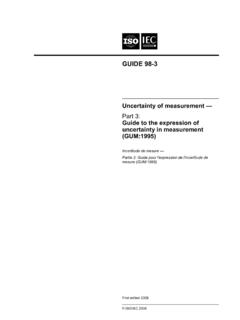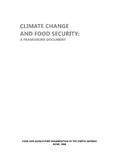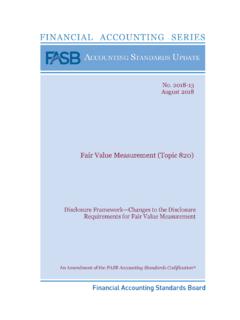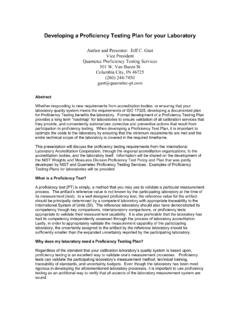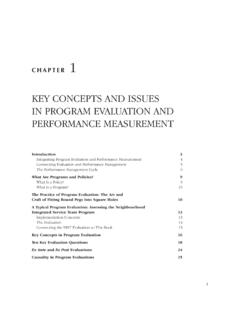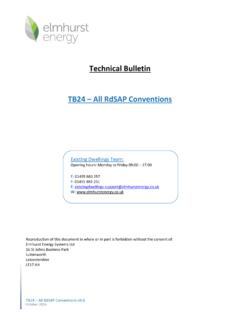Transcription of Scope 3 Emissions: Measurement and Management
1 Scope 3 emissions : Measurement and Management 1 Draff Do Not Copy or 2021 Sustainable Finance InitiativePrecourt Institute for EnergyScope 3 emissions : Measurement and ManagementWorking PaperGireesh Shrimali, PhDPrecourt Energy ScholarSustainable Finance Initiative Stanford UniversityScope 3 emissions : Measurement and Management 2 Draff Do Not Copy or of ContentsI. Introduction ..32. 1st-Best Methods for Calculating Scope 3 emissions .. Addressing double counting in presence of reliable data .. Fair attribution and efficient Management of supply chain emissions ..83. Practical Methods of Calculating and Managing Scope 3 emissions .. Reliability of Scope 3 emissions .. Managing uncertainty in calculating Scope 3 emissions .. Managing uncertainty in managing Scope 3 emissions .
2 134. Path Forward ..155. References ..166. Appendices .. A brief history of Scope 3 emissions protocols .. A recursive method for calculating Scope 3 emissions ..23 Scope 3 emissions : Measurement and Management 3 Draff Do Not Copy or IntroductionGiven that climate change is one of the biggest risks facing the real economy as well as the financial industry, there is an urgent need to measure and manage this risk (TCFD, 2017). For example, this risk may come from new regulation of a company s high emission products and shifts in end-product market demand driven by climate concerns. One way to measure this risk is the carbon (or carbon dioxide/CO2) exposure of products and their corresponding supply chains (Economist, 2020).1 This risk can be internalized by these supply chains in presence of a universal carbon tax (Metcalf and Weisbach, 2009).
3 However, such a universal tax, or even an equivalent cap-and-trade program, appears unlikely due to political economy related barriers (Cullenward and Victor, 2020). Nevertheless, even in the absence of such a tax, it is of tremendous value to measure and manage this carbon exposure, given that it provides a measure of the transition risk facing companies in these supply chains (Baker, 2020).2 Furthermore, many companies are under increasing pressure from their shareholders and stakeholders to commit to reducing their carbon footprints in a significant manner over time. Failing to do so may raise reputational concerns, with adverse implications for financial performance (GS, 2019). Recognizing these drivers, since the Paris agreement, more than 1200 companies have committed to climate action through the We Mean Business Platform and over 800 companies have committed to setting science-based targets (BSR, 2020).
4 Recent examples of financial institutions setting net-zero target are Barclays,3 HSBC,4 and J P Morgan carbon exposure of a business entity , a corporate or a financial institution is typically measured in three different ways (WRI, 2017). Scope 1 emissions are the entity s emissions due to its own activities, , coal power plant emissions for the corresponding power producer. Scope 2 emissions are the emissions from the electricity procured by the business entity, , the coal power plant emissions for the corresponding buyer of electricity. Scope 3 emissions are the emissions of the remainder of the supply chain (minus electricity, , Scope 2), of both upstream and downstream activities (Figure 1). Thus, in a way, Scope 2 emissions are a special kind of Scope 3 emissions , but they are counted separately due to historical reasons.
5 1 For financial institutions, other ways include the following (Economist, 2020): one, gauging greenness to see whether portfolios are aligned with the Paris agreement ( , by the 2 Degrees Investing Initiative); and two, assigning temperature scores to portfolios (Raynaud, 2020).2 It is important to note that the carbon risk is not the only measure of climate risk (Busch, 2018; PCAF, 2015), given that such risks may include technology, markets, and policy risks as well. However, it is a useful See See 5 See Scope 3 emissions : Measurement and Management 4 Draff Do Not Copy or 1: Scope 1 and Scope 3 (both upstream and downstream) emissions in a simplified settingTo get an accurate sense of a business entity s carbon risk, it is then pertinent that all three emissions are accurately calculated.
6 Accurate Measurement of these emissions would allow business entities to track progress towards their stated climate targets and transition pathways (SBTi, 2020; TPI, 2020). Companies have so far focused on measuring and reducing their Scope 1 and Scope 2 emissions , and they have been quite successful in doing do (BSR, 2020).However, the greatest emission reduction opportunities lie in the Scope 3 emissions going forward, given that on average the Scope 3 emissions are times the amount of combined Scope 1 and Scope 2 emissions (BSR, 2020). For example, for Lego and Walmart, Scope 3 emissions constitute 75% and 90%, respectively, of total emissions (Huang et al, 2020).6 In fact, it has now been established that more than 50% of the world s carbon emissions are in eight supply chains (WEF, 2021).
7 7 Therefore, while the historical focus has been on Scope 1 and Scope 2 emissions , now the focus is starting to shift to Scope 3 emissions , not only for assessing the carbon risk of the supply chain but also to hold business entities responsible for the whole supply chain. This also ensures that the carbon emissions of a business entity are not simply pushed to other parts of the supply chain (Chen et al, 2019; Granot et al, 2014).8 While the process of calculating Scope 1 and Scope 2 emissions is well established (Busch, 2018); the same cannot be said of Scope 3 emissions , despite multiple ongoing efforts by coalitions (GHP, 2020; PCAF, 2020; UNFCCC, 2015; SE, 2018) and industry actors (API, 2016; BHP, 2019), 9 as well as commercial data providers (Busch et al, 2018).
8 Among these, GHP (2020) and PCAF (2020) are particularly instructive, given that the former is the overall industry standard, and the latter is the frontrunner standard for financial institutions, and we examine them more closely in our discussion As other examples, Larsen et al (2012) shows that upstream Scope 3 emissions are up to 95% of Norwegian municipalities total emission footprints; and CDP (2016) finds that most of the supply chain emissions are in bought or sold product categories, as defined by GHP (2020).7 WEF (2021) further argues that most of these emissions can be eliminated using cheap carbon abatement measures ( , energy efficiency and renewable energy) costing about $10/ton, with eventual impact to customers being less than 5%.
9 8 For instance, according to Porter (2013), about a fifth of China s emissions are for products consumed outside its borders, and although Europe emitted only billion metric tons of CO2 in 2011, billion tons of CO2 were created to make the products Europeans consumed in that year. This is also evident from the global carbon import flows in WEF (2021). As another example (Chen et al, 2019), self-reported data from Wesfarmers in Australia shows a negative correlation between Scope 1 (or 2) emissions and Scope 3 emissions , indicating that Scope 3 emissions typically go up due to leakage as companies reduce their Scope 1 (or 2) GHP (2020) is by the Greenhouse Gas Protocol, a partnership between the World Resource institute (WRI) and World Business Council for Sustainable Development (WBSCD).
10 GHP (2020) is the de-facto standard, referenced by other frameworks: PCAF (2020) is by the Partnership for Climate Aligned Finance, a coalition of financial institutions; IFI (2015) is for international financial institutions; SE (2018) is for academic institutions; API (2016) is for the petroleum industr y; and BHP (2019) is for the Broken Hill Proprietar y Company (BHP). A brief histor y of these efforts pertinent to the financial industr y is provided in the Appendix (Section ). Scope 3 emissions : Measurement and Management 5 Draff Do Not Copy or example, as of March 2020, only 18% of the constituents of MSCI ACWI IMI reported Scope 3 emissions (Baker, 2020), with considerable variability across sectors. As another example, there is increasing evidence that many of the worst polluters both private ( , Exxon) and public ( , NIOC/Iran) either under-report or do not report at all (Fick ling and He, 2020).
